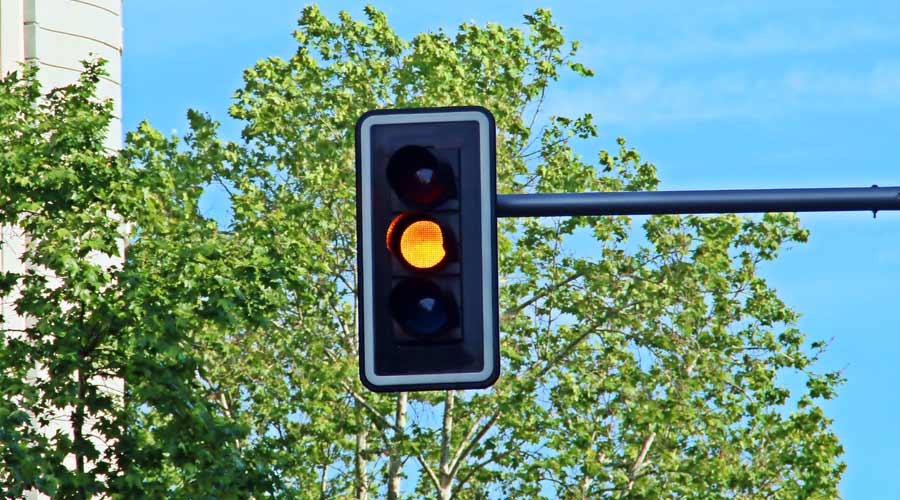An amber light is meant for a motorist to slow down and wait for the signal to change, one of the basics of driving that a significant number of motorists across Kolkata are not aware of, senior police officers said on Monday.
Several of them said the fatal accident at Chingrighata in east Kolkata on Saturday could have been avoided had the driver of a Hyundai i20 not ignored the amber light at the traffic signal on Saturday afternoon.
A pedestrian died and at least six, one of whom was a cyclist, were injured after being hit by an allegedly speeding car that flouted a traffic signal at the intersection around 4pm on Saturday.
What does the amber light mean?
Several officers of Kolkata police’s Traffic Training School in Tallah said there were three types of amber lights.
One amber comes on before the signal turns green from red.
“This amber is a message to drivers to switch on the engine and be ready so that once the signal turns green, they can move,” said an officer.
On other occasions, the amber light is switched on when the police want drivers to slow down before the signal turns red from green.
“Here the amber light is basically meant to inform drivers that the traffic signal is about to turn red. Vehicles that have already reached the ‘stop line’ will not stop. But all others approaching the ‘stop line’ will have to slow down," said a senior instructor at the traffic training school.
“The vehicles will have to stop ahead of the ‘stop line’ and not on it when the signal turns red."
The waiting period for the amber light is usually between three and five seconds, depending on the volume of traffic.
There is a third category of amber light, which is usually kept on a blinking mode at intersections of a minor road and a major artery. At certain intersections the ‘blinking amber mode’ is switched on at night.
“All vehicles have to mandatorily slow down at the signals where the amber light is on the blinking mode. Irrespective of whether there is heavy traffic at the intersection or not, one has to slow down,” the officer said.
“The driver has to see all the sides and then proceed. A blinking amber light doesn’t mean one has to stop the car but it is mandatory to slow down.”
Officers said the majority of drivers across Kolkata have a tendency to speed past an amber light at a traffic signal — endangering the lives of others — primarily because they aren’t exactly aware of the signal rules.
Several motorists said they often kept driving when a signal turned amber because there was usually no uniformity of the waiting time.
“In some instances one has to wait for 10 seconds, while in others the waiting period is shorter,” said Suvendu Ghosh, a resident of Kasba in south Kolkata.






